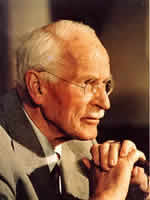 Przewody doktorskie prowadzone lub przeprowadzone w Uniwersytecie w Essex:
Przewody doktorskie prowadzone lub przeprowadzone w Uniwersytecie w Essex:
Promotor: prof Karl Figlio
Ann Addison – A Study of Transference Phenomena in the Light of the Jung’s Psychoid Unconscious and Ogden’s Autistic-Contiguous Position (J)
Abstract: In clinical practice, patients often bring material that is pre-verbal and pre-symbolic, relating to psychological states where psyche and soma may be indistinguishable from one another. The question that interests me concerns the processes by which psyche emerges increasingly from soma, both developmentally and within analytic treatment, and how these processes may be identified and mediated within the transference. This may be relevant particularly in the treatment of certain symptomatic conditions, including autistic spectrum disorders and dissociation.
From a theoretical point of view, Jung postulated various mechanisms linking psyche and soma, including an area of functioning that he termed “psychoid”, by which he meant a deeply unconscious set of processes that are neither physiological nor psychological but that somehow partake of both. In his use of the expression, he was following an intellectual tradition already laid down by Hans Driesch and Eugen Bleuler, who earlier had written about the relations between mind and body in terms, respectively, of concepts that that they each named “psychoid”. Jung thus crystallised a new understanding of such relations, himself associating psychoid processes with his theory of archetypes, according to which they would constitute an ordering principle leading to the development or growth of the personality and hence, I infer, to the increasing emergence of mind out of body.

Thomas Ogden, following another intellectual tradition including amongst others Frances Tustin and Eugenio Gaddini, has also written of a primitive mode of organising experience, which he called the autistic-contiguous position, in which raw sensory data are ordered by means of forming pre-symbolic connections between sensory impressions. He sees this as an integral part of normal development, characterised by experiences of sensation at the skin surface and leading first to the development of a bodily ego and ultimately to an experience of self in the ego or “I”. According to Ogden, this phase precedes the paranoid-schizoid position and constitutes a pre-cursor to symbolisation, and he suggests that imitation serves in this phase as a mediator for change and mental development.
My hypothesis is that particular phenomena occurring varyingly along the body-mind axis in the transference and countertransference, and including amongst them a phenomenon that might be termed “psycho-sensory” in that it combines experiences both of body and of mind in sensation at a psychic level, may be identified and that the evolution of these phenomena during treatment may be found to coincide with these theories. Such phenomena would thus be expected to arise during periods of regression to primitive early states within the consulting room when issues concerning separation and bodily integrity are at the forefront.
From a clinical point of view, a methodology for testing this hypothesis might be based on an evaluation of categories of transference and countertransference experience, extending from behavioural characteristics (eg gestures and mannerisms) through physical symptoms (eg pangs of hunger) to psycho-sensory phenomena, verbal thoughts and visual images.
Accordingly, the aims of this project are to:
1. Trace the derivation and meaning of Jung’s use of the expression “psychoid”, acknowledging the contributions of Driesch and Bleuler, in order to relate this to his view of psychic development;
2. Set Ogden’s ideas concerning the autistic-contiguous position and its relation to psychic development in context within psychoanalytic literature, particularly that concerning imitation;
3. Isolate and identify characteristics of both, and consider whether there are links between them; and
4. Formulate and apply a practical tool for evaluating transference and counter-transference observations and for comparing the results against such characteristics in order to test these theories.
Faye Carey – Space and Image in the Countertransference (P)
Georgia Chalkia – Narcissism: The aborted hope? (P)
The concept of hope in psychoanalysis has been defined as a certain mental representation of what is expected but not yet there, that is, something that is believed to be there soon and is related to seeking and finding objects (Rizzuto, 2004). By extension, the object of hope may be considered either as that which has not yet been experienced or as that which has not yet come to be (Wren, 1970). The flexibility and versatility of this definition has allowed psychoanalytic theorists to use it in a number of ways, both theoretically and in the clinical setting. At the same time though these very qualities created a lot of conceptual confusion; hope has been broadly treated either as a state of mind or as a motivational force which at the same time carry defensive connotations. Additionally, the concept has been used through its dialectics which are diverse and often of a contradictory nature.
The aim of the research is to conduct a conceptual clarification by highlighting how the concept is used clinically and to pinpoint the technical problems that arise in the clinical setting, i.e., emphasis on the interpretation of meaning vs. purpose. This can be done through the elucidation of the gap between ‘what is expected and not yet there’. This gap I believe that can be examined through a negative dimension of hope which I call ‘aborted hope’ phantasy. The ‘aborted hope’ phantasy is a clinical concept which constitutes a defensive constellation that comprises persistent/repetitive groundless expectations lost in timelessness, immobility, evasive life manoeuvres, apathy, and on a more primordial level lack of both genital and generic desire. This constellation functions as a ‘psychic strategy’ which aims at, a. to finding a long lost -but unknown to the subject- object (in this case representation of the paternal structuring function) and b. to disguise the effect of the psychic pain that would emanate if this loss were to be acknowledged. In structural terms this gap expresses a tension between ego and ego-ideal (Kancyper, 2007).
The genesis of this strategy I believe that lies in what Green calls an ‘erasure of what should be perceived’’ (Green, 1999, p. 218). This erasure, which points to the inner representation of the negative manifests itself both in the field of affect and thinking processes. It refers to a negative (representation of the parental structuring function) which continues to exist even when not perceptible to the senses—‘harking back to absence, to latency’- (Green, 2005). In this negative representation the paternal structuring function is of the order of the unrepresentable. I link the unrepresentable with –K, as an ‘absence’ of the desire to know; In this way, the aborted hope phantasy as a set of phenomena can be one realisation of –K and can help to operationalise –K.
Yiukee Chan – From Freud to Groddeck: Ferenczi's honest issues (P)
Abstract:The recent revival of Ferenczi in the history of psychoanalysis suggests his significant but buried role. Published materials, especially correspondence, from archives, give us a picture different from the conventional version. Ferenczi's desire for honest relationship fuelled his affinity for Freud, his guru, as well as his pursuit of psychoanalysis as a way of life. Ferenczi’s approach to honesty was in fact very similar to the young Freud during the Fliess period, in which Freud practised self-analysis with profound self-disclosure in his letters to and ‘congresses’ with Fliess. However, after the painful break from Fliess, Freud separated life from psychoanalysis, but Ferenczi saw psychoanalysis as a solution to everything and, as a way, if not the only way, of life. That is, Ferenczi tried to live psychoanalytically, thinking that Freud could be one of his partners in this kind of living. Also, their different conceptualisations of counter-transference testify to their different approaches to psychoanalysis. Freud’s insistence upon abstinence and guard against counter-transference were in direct contrast to Ferenczi’s advocacy of the therapeutic use of relaxation and counter-transference. Their fateful relationship shows not just their different understanding of what psychoanalysis should be, but also how close they could be, as Freud did not reciprocate Ferenczi’s demand for a mutual and frank relationship. The conventional view, such as the one perpetuated by Jones in the Freud biography in the 1950s, tends to attribute Ferenczi’s craving for honesty to his immaturity or even pathology.
This study, however, would attempt to study Ferenczi’s longing for honesty with Freud within a relational framework, by studying in-depth how their relationship evolved and faded. The critical role of Groddeck as a Freud-surrogate, who appeared in the middle of the 25-year Freud-Ferenczi relationship, would also be examined similarly. The Groddeck-Ferenczi pair appeared more compatible, in view of their similarity in personality and approach to psychoanalysis and life. Ferenczi trusted Groddeck very much and received treatment for his multiple somatic and psychological ailments from him in his sanatorium in Baden-Baden every year after 1921. They practised mutual analysis and inspired each other, psychoanalytically and otherwise.
The primary source of information for this study would be their correspondence and archival materials, whereas the secondary ones would be biographies and published papers on the history of psychoanalysis. Analysis of the text and the underlying flow of themes and feelings in the letters would give us a close-up on the vicissitudes of these two relationships, as well as how Ferenczi worked on his need for honesty with these two persons, as intertwined with the corresponding evolution of his pioneering psychoanalytic ideas. This study would be the first of its kind. If psychoanalysis is meant to be a truth-searching road towards the unconscious, Ferenczi’s story of honesty may mirror the development of psychoanalysis itself. Retelling this story in the light of new evidence and perspective may also be a worthwhile chapter in the history of psychoanalysis.
Paul Ford – Paternal Containment and the Super-Ego (P)
Abstract: My thesis shall argue, from an object relations perspective, for a dimorphic model of the mind that unifies and remedies monomorphic models advanced by Freud and Bion. My model of the mind has been created as a more complete model of the mind than Freud and Bion developed and is thereby of help to clinicians.
Bion’s containment model is implicitly gendered, comprising only a maternal container. Engaging with this unisexual and monomorphic notion, I create a notion of a dimorphic container that supplements the maternal container with a paternal container based on Freud’s Über-ich.
This manoeuvre also remedies Freud’s structural model, which is also implicitly gendered in comprising only a paternal agency in the form of das Über-ich. Engaging with this unisexual and monomorphic agency, I create a notion of dimorphic agency in which the paternal Über-ich is supplemented by a maternal Unter-ich based on Bion’s maternal container. I demonstrate this model by using spatial imagery, the paternal form dominating aggression from above and the maternal form supporting distress from below.
By unifying Bion’s containment model and Freud’s structural model, I create a notion of dimorphic containment agency, the maternal container or Unter-ich and the paternal container or Über-ichcomprising the bisexual polarities that forge this dimorphism, and, as such, I reinforce Freudian notions of bisexuality that I believe both Freud and Bion lost sight of in creating their models of the mind.
Mei-Tzu – Ho The Reception of Freudian Theory, especially Dream Theory, in Taiwanese Culture (P)
Abstract: The translation of Freud’s works into other languages involves not only translation of the text from one language into another but also translation of the rules and concepts of psychoanalysis from one culture into another. The translators play an important role as the medium through which Freud’s concepts, particularly at the interface of two distinct languages and culture, are communicated. Translation of Freud’s concepts into Taiwanese language and culture has posed three main problems: (1) the distinct difference between alphabetic and heliographic language; (2) the gap between epistemological and genealogical acts; (3) differences in the structure of family and society. This paper represents the obstacles of language in presenting Freud’s concepts to Taiwanese readers, and also identifies cultural resistance to assimilation of Freud’s central theory of the Oedipus complex. Three specific instances of resistance are considered: the mutation of the Oedipus complex into the Paris complex or power complex, reshape the definition of “ego” which Western Individuation indicates, and the discretionary language used to describe the origins of Dora’s symptoms. In conclusion I consider whether the failure to represent Freud’s theories is evidence solely of difficulties in communicating alien concepts, especially where there is no vocabulary to speak of what is internal, or whether it is attributable to a reaction- formation against sexuality.
Elizabeth Reddish – The Integrative Superego (P)
Abstract: There is an aspect of the superego which has long been ‘reached after’ but never articulated, namely its function as a containing structure. The role of the superego as a moral agency is secondary to this primary role. The capacity for this function arises from the place of the superego as a ’differential’ in the ego. Acknowledgement of this differential and the dimensionality it affords (in the setting up of the Ego Ideal), allows us to distinguish between two types of reality-testing; that which monitors for existential threat and that which benchmarks the ego against an internal ideal.
Excavation and articulation of this function is important in order to the understanding of adaptive functioning in a certain group of patients with early trauma who predominantly function in 'survival mode'.
I illustrate the superego functioning as a containing structure by presenting some case material. I then critique a history of the development of the concept in the search for a better account of these patients' functioning. I finally turn to the work of other clinicians to see whether ways in which they may have found the concept lacking, match my own experience. I show that there is close overlap between those ways in which theoreticians and clinicians believe the concept needs re-conceptualising to embrace new clinical evidence, and those aspects which Freud touched on but did not develop.
An understanding of this, usually invisible, function of the superego offers a richer predictive model for clinical work. I shall illustrate this by showing how distinguishing between levels of reality-testing is essential for the maintenance of emotional contact with the patient.
Dane z: http://www.essex.ac.uk/


.jpg)

 (Opracowane na podstawie przedmowy Jerzego Prokopiuka do pracy: "Odpowiedzi Hiobowi" Carla Gustava Junga, Wyd. "Ethos", Warszawa 1995)
(Opracowane na podstawie przedmowy Jerzego Prokopiuka do pracy: "Odpowiedzi Hiobowi" Carla Gustava Junga, Wyd. "Ethos", Warszawa 1995)